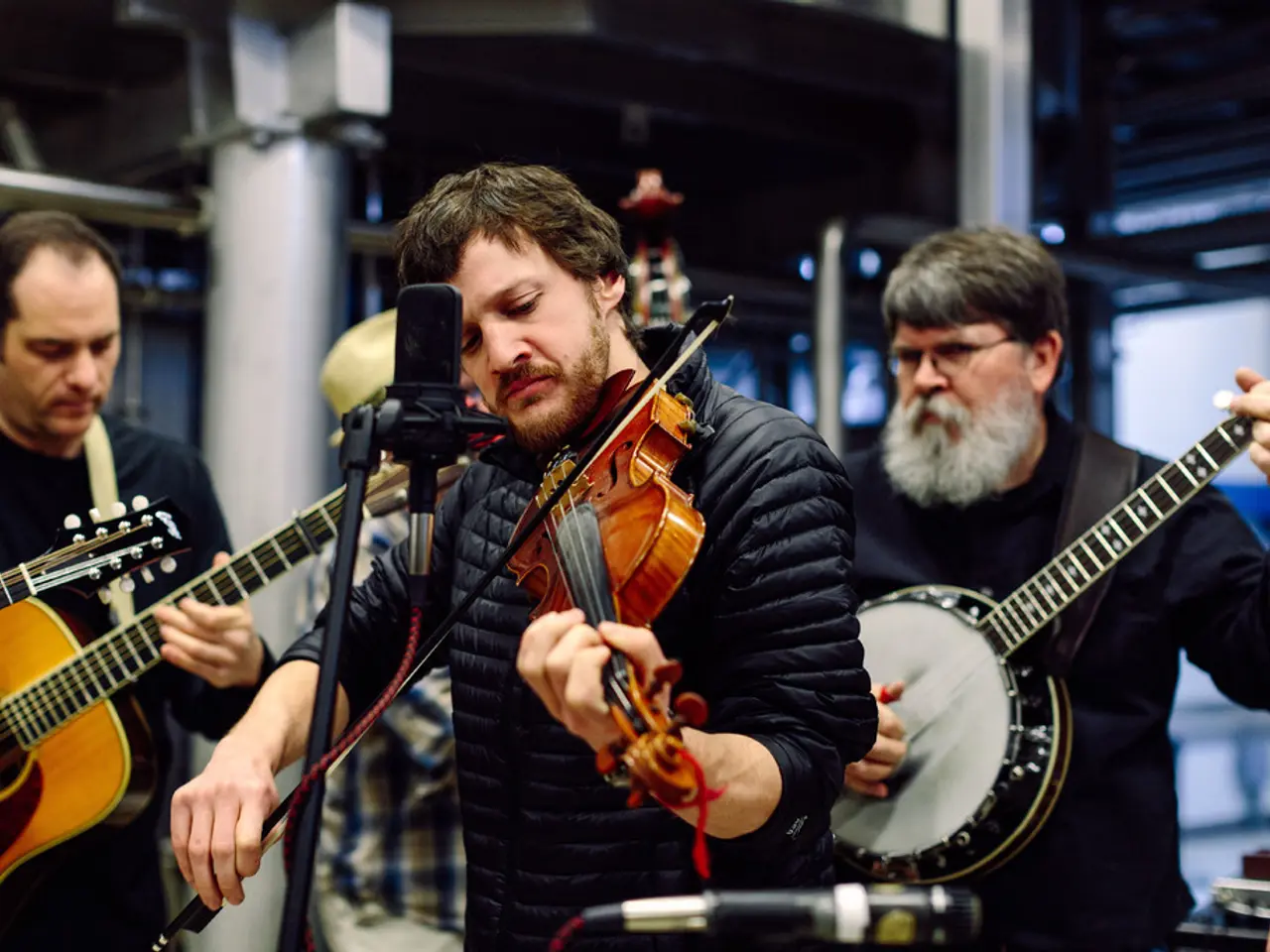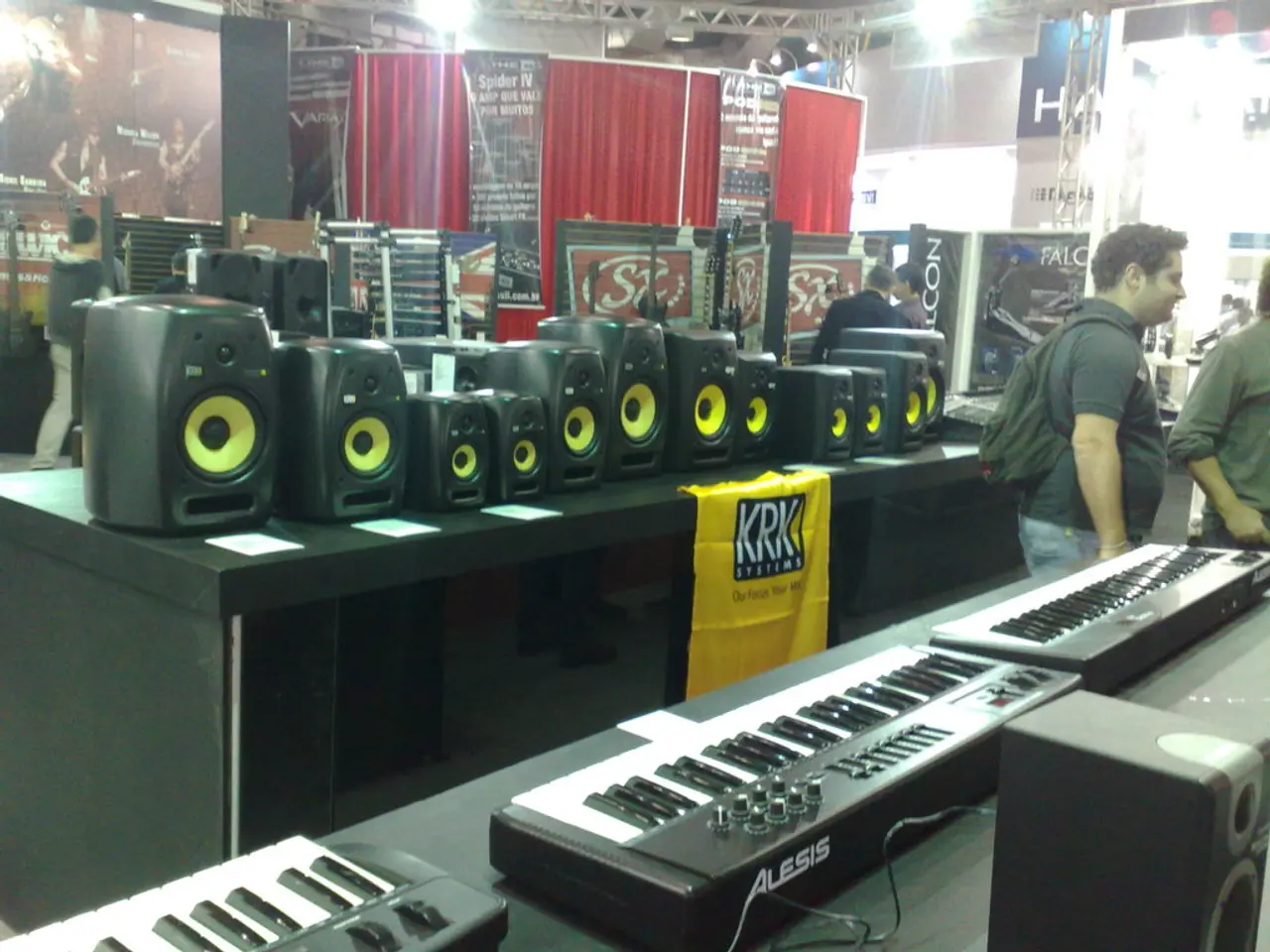Guide for Simultaneously Recording Guitar and Vocals: Professional Technique
In the world of music production, capturing both guitar and vocal tracks at once can be a challenging yet rewarding task. To ensure the best possible results, it's essential to focus on three key areas: choosing the right space, understanding isolation and acoustic treatment, and selecting appropriate microphones and equipment.
1. Choosing the Right Space
The first step is to find a quiet, noise-free environment. Ideally, this space should be separate from noisy areas such as streets or appliances. Rooms with minimal reflective surfaces, like hard floors and bare walls, can cause unwanted echoes or reverb. Instead, opt for locations that can be acoustically treated. For the best results, consider setting up both a live room for the musician and a control room for monitoring, or at least provide sight lines between the artist and engineer.
2. Understanding Isolation and Acoustic Treatment
Isolation, or soundproofing, prevents outside noise from entering and reduces sound leakage outside the room, crucial for clear recordings. Within the room, use acoustic treatment to manage reflections and standing waves. Bass traps in corners can reduce low-frequency buildup, while absorption panels on walls control mid and high frequencies without overly deadening the room. Diffusers scatter sound waves and maintain natural ambience without flutter echoes. Position the recording area away from reflective surfaces if possible and use rugs or blankets to reduce floor reflections.
For guitar and vocals recorded simultaneously, consider physical barriers or baffles to isolate the instruments slightly and reduce bleed, but avoid isolating so much that the natural acoustic interaction is lost.
3. Selecting Appropriate Microphones and Equipment
For acoustic guitar, condenser microphones are most commonly used to capture detailed, rich tones. However, ribbon or dynamic mics can work depending on the sound desired. For vocals, a large-diaphragm condenser mic is typically preferred for clarity and warmth.
When recording guitar and vocals at the same time, use separate microphones positioned carefully to minimize bleed but still capture the natural blend. Place the vocal mic at mouth level, about 6-12 inches away, and the guitar mic aimed near the 12th fret or sound hole, experimenting with mic height and distance for tone balance. Consider using close mics and, optionally, a room mic to capture natural space and ambience—record each mic to a separate track for flexibility during mixing.
Use a good-quality audio interface with low noise preamps and sufficient inputs to handle multiple mics simultaneously. Check and adjust input gain so peaks are around -6 dB to avoid clipping while maintaining a good signal-to-noise ratio.
Additional equipment like pop filters, mic stands, headphones for monitoring, and ergonomic furniture improve the recording experience and comfort during longer sessions.
In summary, the best setup balances quiet isolation, proper acoustic treatment, and thoughtful mic selection and placement to achieve clear, natural recordings when capturing guitar and vocals simultaneously. Additional techniques like chorus or doubler effects can enrich the sound of guitar tracks. With the right approach, you'll be well on your way to creating professional-quality recordings.
4. Home Studio Setup
Equip your home studio with reliable recording software to manage and edit audio files. Look for software that includes tools for MIDI sequencing, multi-track recording, and mixing. Some popular options include Logic Pro, Pro Tools, and Ableton Live.
5. Music Recording
When recording vocals and guitar simultaneously, remember to start with the elements that need a steady rhythm, like the guitar. Once the guitar track is laid down, record vocals, making sure to give each performance the attention it deserves.
6. Entertainment and Music
The merged guitar and vocal tracks serve as the foundation for the final production, blending the unique styles of both instruments to create a captivating performance in the world of music and entertainment.
7. Mixing
Finally, in the mixing phase, balance the levels of guitar and vocals, equalize frequencies, and add effects like reverb and compression to shape the overall sound. If using a digital audio workstation (DAW), take advantage of automation features to deliver a polished end product.








